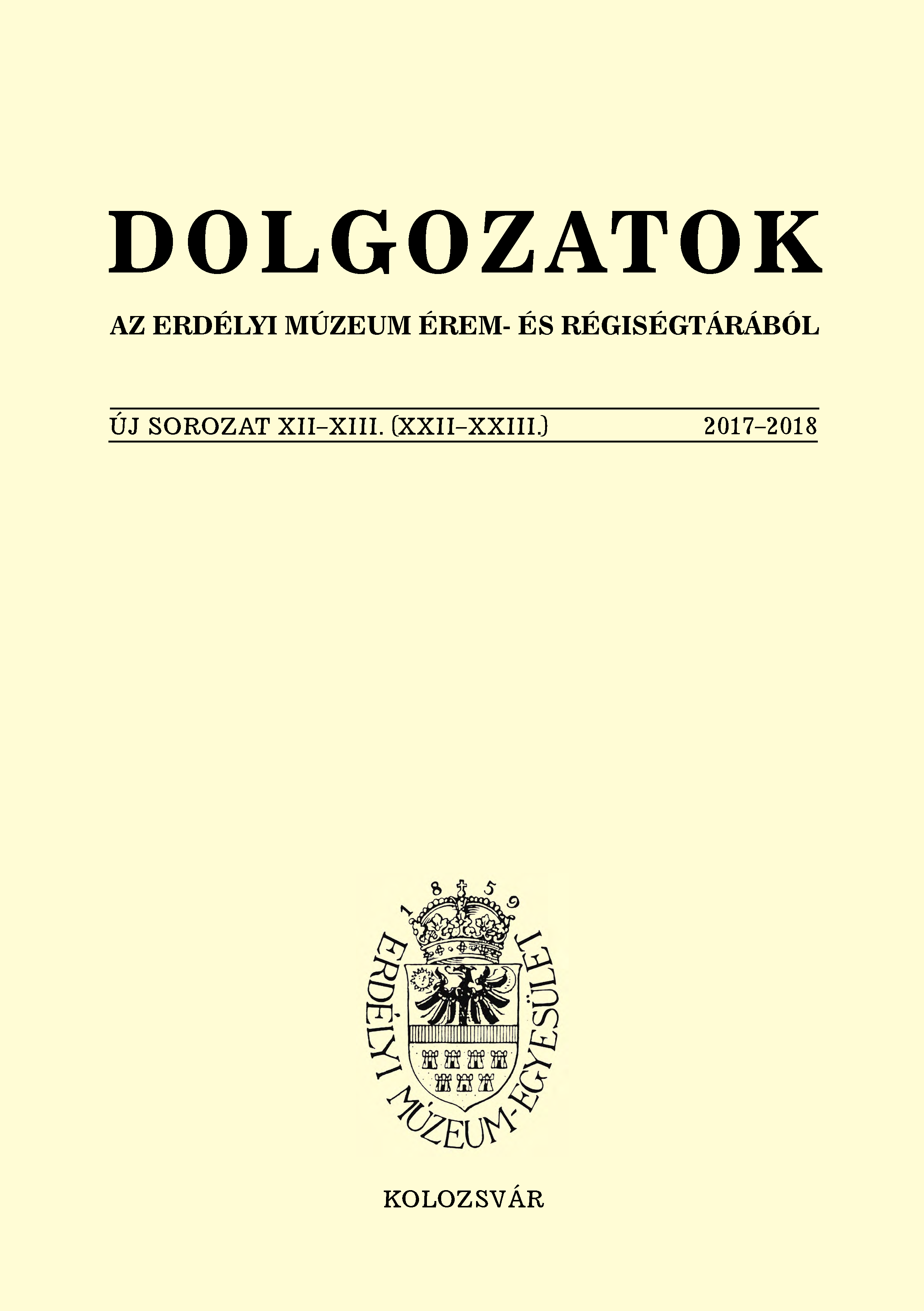Lugossy Ferenc magyarpeterdi (Petreștii de Jos) római kőfaragvány-gyűjteménye a 17. század végén
The Roman stone monument collection of Ferenc Lugossy during the late-17th century
Author(s): Dávid PetruţSubject(s): Archaeology, Ancient World
Published by: Erdélyi Múzeum-Egyesület
Keywords: Magyarpeterd/Petreștii de Jos; antiquity collections; antiquarians; Apulum, Transylvanian Principality
Summary/Abstract: The history of Roman stone monument collections in Transylvania is mostly associated with the ‘ruin parks’ set up by various 19th century antiquarians at their country estates. The beginnings of these antiquarian endeavours however date back to much earlier times, being linked to the circle of humanist church intellectuals active in Alba Iulia/Gyulafehérvár starting with the 15th century. The collection founded by Ferenc Lugossy, prominent member of the Transylvanian princiary court during the second half of the 17th century, can be regarded as a later manifestation of the aforementioned humanist tradition, even though it was established at his estate in Petreștii de Jos/ Magyarpeterd, situated at the foot of the Turda Gorge (Cheile Turzii/Tordai-hasadék), rather than the princiary capital. The sources indicate that we are dealing with one of the most important Roman stone monument collections of the time. Documents also inform us that following the passing of its founder – probably in 1692 – the collection swiftly began to disintegrate, and by the beginning of the 20th century it had completely seized to exist, the monuments being either taken away or used as construction material by the locals. The present paper qualifies as an attempt to reconstruct the history and original composition of this important collection. One of the most important sources mentioning the monument park at Petreștii de Jos is the well-known epigraphic corpus assembled by the Italian officer of the Austrian imperial army, Giorgio Ariosti in 1723 (Iscrizioni antiche trovate, e raccolte tra le rovine delle quattro principali colonie Romane della Transilvania dal conte Gioseppe Ariosti nobile Bolognese Ferrarese, e Senese capitano d’infanteria nel reggimento Gaier. E parte di esse dal medesimo condotte in Vienna d’Austria per comando della sacra cesarea Cattolica Real Maesta di Carlo VI Imperatore de Romani l’anno MDCCXXIII). Prior to drawing up the corpus, Ariosti had organized a shipment of 64 Roman stone inscriptions to Vienna. Only three of the four ships made it to their destination, as one of them was shipwrecked near the Hungarian town of Szeged, its cargo of 17 Roman inscriptions lying at the bottom of the Tisza River to this day. The corpus drawn up by Ariosti contains 4 inscriptions which were formerly part of Lugossy’s collection. By the beginning of the 19th century further epigraphic monuments found their way into other collections, e.g. to the nearby town of Torda/Turda, Torockószentgyörgy/Colteşti and Cege/Țaga. The exact composition of the collection is currently impossible to reconstruct, as no inventory of the monuments is available. The renowned German epigraphist Theodor Mommsen by researching the epigraphic corpora of Transylvania established that at least 18 inscriptions from Roman Dacia included in his Corpus Inscriptionum Latinarum III were formerly part of Lugossy’s collection. Thus, based on the precise bibliographical references and provenience data offered by Mommsen at least a part of the original collection can be reconstructed. The number of inscriptions most often mentioned in the literature thus far is either 13–14 or 16, without taking into account the gradual disintegration of the collection following its founder’s death. Also based on Mommsen’s work the provenance of the inscriptions can be established in eight cases, six inscriptions coming from Apulum and two from Ampelum, while in the remaining 10 cases the provenance remains unknown. The large share of inscriptions coming from Apulum and the neighbouring Ampelum seems to provide further confirmation of the link between the collection at hand and its humanist precedents in Alba Iulia, the town founded on the ruins of Roman Apulum. Currently seven of the 18 inscriptions survive, three are kept the Gherla History Museum, two are at the Turda History Museum, while further two can be found in Vienna in the collection of the Kunsthistorisches Museum and the Österreichische Nationalbibliothek along with a number of further inscriptions from Dacia.
Journal: Dolgozatok az Erdélyi Múzeum Érem- és Régiségtárából. Új sorozat
- Issue Year: 2018
- Issue No: XII-XIII
- Page Range: 259-272
- Page Count: 14
- Language: Hungarian

